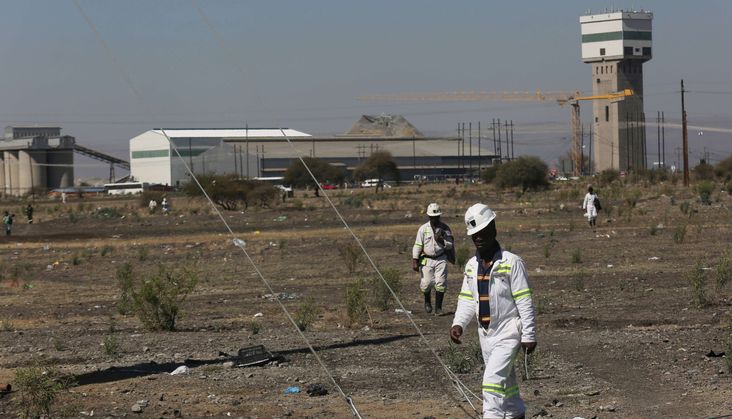This has been driven in part by South Africa’s mining strikes. The metal looks like a one-way bet as a short-term supply squeeze, but the market may have misunderstand the long-term dynamics of demand for palladium from carmakers.
Palladium, and the related metal platinum, are found only in southern Africa, Siberia and, to a lesser extent, in the US and Canada. More than 60% of palladium is used in making catalytic converters, with the metal being particularly favoured for gasoline vehicles.
- The ever-tightening cycle of vehicle emissions regulation aimed at producing cleaner forms of transport seems to provide the perfect secular backdrop for the metal’s bull run. More than 95% of vehicles sold in Europe are equipped with a catalytic converter, according to Barclays.
Southern African miners dig up nearly half of the world’s palladium. Key players are Impala Platinum, Lonmin and Sibanye, which are currently benefiting from the record prices. Palladium is in “extremely short supply”, particularly in South Africa, Jonathan Butler, precious metal strategist at Mitsubishi, told Bloomberg on 19 March.
A decade ago, palladium, which derives its name from the ancient Greek goddess of wisdom, Pallas, cost less than $200 an ounce. Now, it trades at around $1,600, having almost doubled since August 2018. So we have a long-term, one-way bet on reducing vehicle emissions, with South Africa’s militant miners producing a short-term squeeze. Right?
The answer depends on whether investors prefer the risk of missing out on a momentum rally, or that of being left holding an unloved and unneeded commodity when the bubble bursts.
Electric vehicles
According to an October 2018 report from Elisa Vergine and Wim Van Hyfte at Candriam Investors in Brussels, there remains potential growth in demand for palladium until 2025.
However, given the electrification of transport, Candriam argues that demand for the platinoid group to which palladium belongs is likely to decline in the following decades. In fact, in the long term, platinoids may suffer from ever stricter rules on CO² emissions.
- For some carmakers, the cost of each incremental change in regulation is becoming so important that there’s no longer any point in investing in this kind of engine, Candriam argues.
- New regulatory demands could encourage carmakers to move directly to electric vehicles.
The threat of palladium supplies being disrupted by South African strikes also needs to be seen in the longer-term context of patterns of South African labour militancy.
- The Mandela Initiative found in 2017 that the number of days lost to strikes in South Africa had considerably decreased since 2000, though when workers do strike, they do so with greater determination and at higher cost.
Ethical supply chains
Pressure on carmakers to ensure ethical supply chains is likely to dampen demand for palladium. The Marikana massacre of 2012, in which 34 miners were killed by police during wildcat strike at a platinum mine owned by Lonmin, was a tragic example of how things can go wrong. A jump to electric vehicles would, at a stroke, remove the reputational risk from such disasters for carmakers.
- In 2016, a report from Amnesty International criticised Lonmin for failing in its legally binding obligation to provide lodging for the Marikana miners. According to the NGO, only three houses were built by the company for 13,500 employees needing to be housed.
- Candriam cites the saga as a case that highlights the need for intensive corporate governance analysis by investors and industrial buyers.
Bottom line:
Carmakers have every incentive to jump straight to electric cars rather than relying on palladium to clean up gasoline vehicles. Short-term supply shortages in palladium may flip very quickly into a structural glut, with South Africa’s miners the first to feel the pain.

